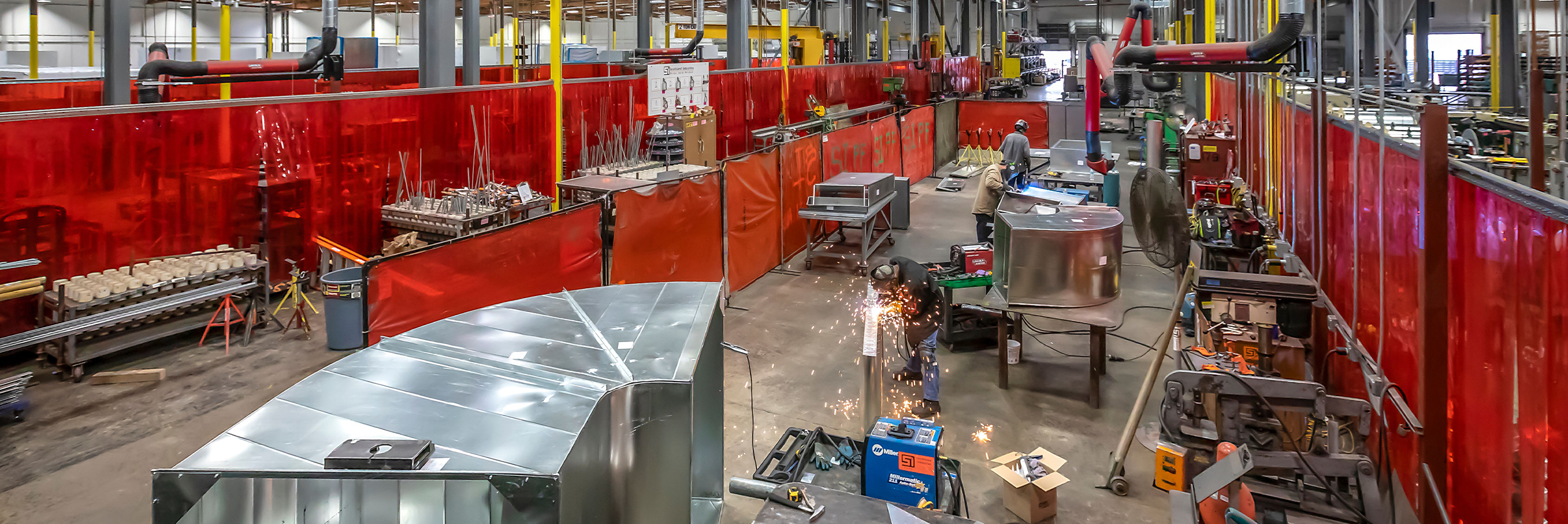How a Pandemic Has Accelerated Automation
COVID-19 has dramatically changed the reality of the world’s population. More so, it has undoubtedly affected the way businesses operate and how they plan to resume tasks once the economy reopens. While a sense of ‘normalcy’ is expected and wished upon, what the new normal will look like is something that is still being evaluated in virtual board meetings around the globe.
Robots in the Workplace: A Threat or Opportunity?
Robots performing daily tasks in the workplace is not a new concept. Nearly all manufacturing floors have a robot within their ranks. How specialized or diverse the robotic workforce is varies greatly based on several factors: industry, what part of the world the floor is located and the scale and sophistication of that business.
Robots have been found on manufacturing floors in the United States since 1961 – the year Unimate joined General Motors as a spot-welding aid. In the 1970s, automotive automation entered a new fast-track era, and nowadays automotive manufacturing accounts for almost one-third of new industrial robot installations.
Japan, China, the United States, South Korea, and Germany are among the five leading industrial robot markets worldwide. Yet, automakers are not the only ones realizing the immense potential of having robots perform daily, repetitive tasks. More and more companies are engaging with robots with the objective of promoting efficiency, reducing risk and liability and cutting overhead costs to offset the war against rising wages.
Robots Answer the Call
Fast forward to 2020. The global pandemic that has changed the course of daily life has made manufacturers pause to think: how can we emerge from this crisis? How can we provide a safe and resilient floor while maintaining social distancing measures that may be in place until 2021 and beyond?
Robotics answer the call on all aspects by solving an important ‘issue’ we currently face with human interaction: fear and risk of contagion. Futurist Martin Ford wrote, "People usually say they want a human element to their interactions but COVID-19 has changed that, [COVID-19] is going to change consumer preference and really open up new opportunities for automation."
So, what does this change mean to the planning of facilities? More than ever facilities, manufacturing floors and laboratories will need to be able to accommodate the shift in workforce, be resilient to change and provide safe working conditions.
Although the Occupational Safety and Health Administration has issued standards that provide recommended protocols for daily operations, internal EH&S departments will come up with more strict protocols to add. As a result, planners and designers of these spaces must also shift their mentalities to reimagine spaces in ways that prevent large gatherings, ensure break room areas allow for natural air, light and social separation, and re-envision locker rooms, changing areas and other congregation spaces that may no longer adhere to safety guidelines.
How do robots play a role in this new world? Will they replace an entire workforce? Or be a critical component in the fight against economic uncertainty and fear of human contact? The answer is perhaps a combination of both. The controversial concept of replacing people with robots now looks medically wise and robot manufacturers are seeing an exponential rise in the demand for this technology.
Facilities of the Future are Here
For years we’ve been reading about “facilities of the future,” the “future of automation” and other technological advances that will transform our daily lives. Even the entertainment industry has reinforced these themes in movies and TV shows where robots take over humans’ everyday jobs and replace low-wage workers for automated easy utopia.
Our current pandemic has pushed the boundaries and comfort zones of nearly every single industry. Stay-at-home orders forced offices to go remote, testing whether their technological infrastructure was ready to accommodate the growing demand for screen time and seamless virtual meetings. All the while, e-commerce grew exponentially to satisfy the need for goods when people couldn’t leave the house, distribution centers rearranged efforts to keep up with the demand and the supply chain had to fight, and is still fighting, to fulfill its goals.
Robotics can, and will need to be deployed to support the workflow that millions of people on lockdown can’t. With economic uncertainty as countries reopen, the need for skilled, efficient work to produce, rack up inventories, sort, manage and distribute goods will need to be fulfilled at a fast pace. The workplace of the near future will become a place where robots and humans interact and collaborate seamlessly and efficiently on a daily basis. Repetitive tasks will no longer burden humans in the field but will be moderated by them and performed by a robot.
By 2030, robots are expected to replace a third of our U.S. workforce – a figure McKinsley forecasted back in 2017. Now, that number is expected to be much larger, and the shift toward automation to happen much faster. It’s now up to those designing facilities of the future to ensure the integration happens seamlessly, and for planners to allow for the human aspect to push and drive the automation of the new reality.
Designers Play a Crucial Role
As the global health crisis continues to impact ways of working, tremendous progress in automation will only accelerate, reinforcing the need for designers to be agile and empowered to pivot in an ever-changing landscape. The following are key considerations:
Flexibility is Key. Now more than ever, facilities have to be able to flux, grow, adjust and prepared to receive automation at different levels.
Collaboration Will Look Very Different. We are now talking about interaction between working machines and robotic ecosystems that mesh with human space. How does that look? How does it change the worker’s perspectives on the place of work?
Space Allocation: Less is More. With robots taking over repetitive tasks and the speed and accuracy in doing them, space that was previously allocated for QA, staging, WIP, kitting, etc. may now be seen as redundant, or even disappear altogether from a manufacturing floor.






